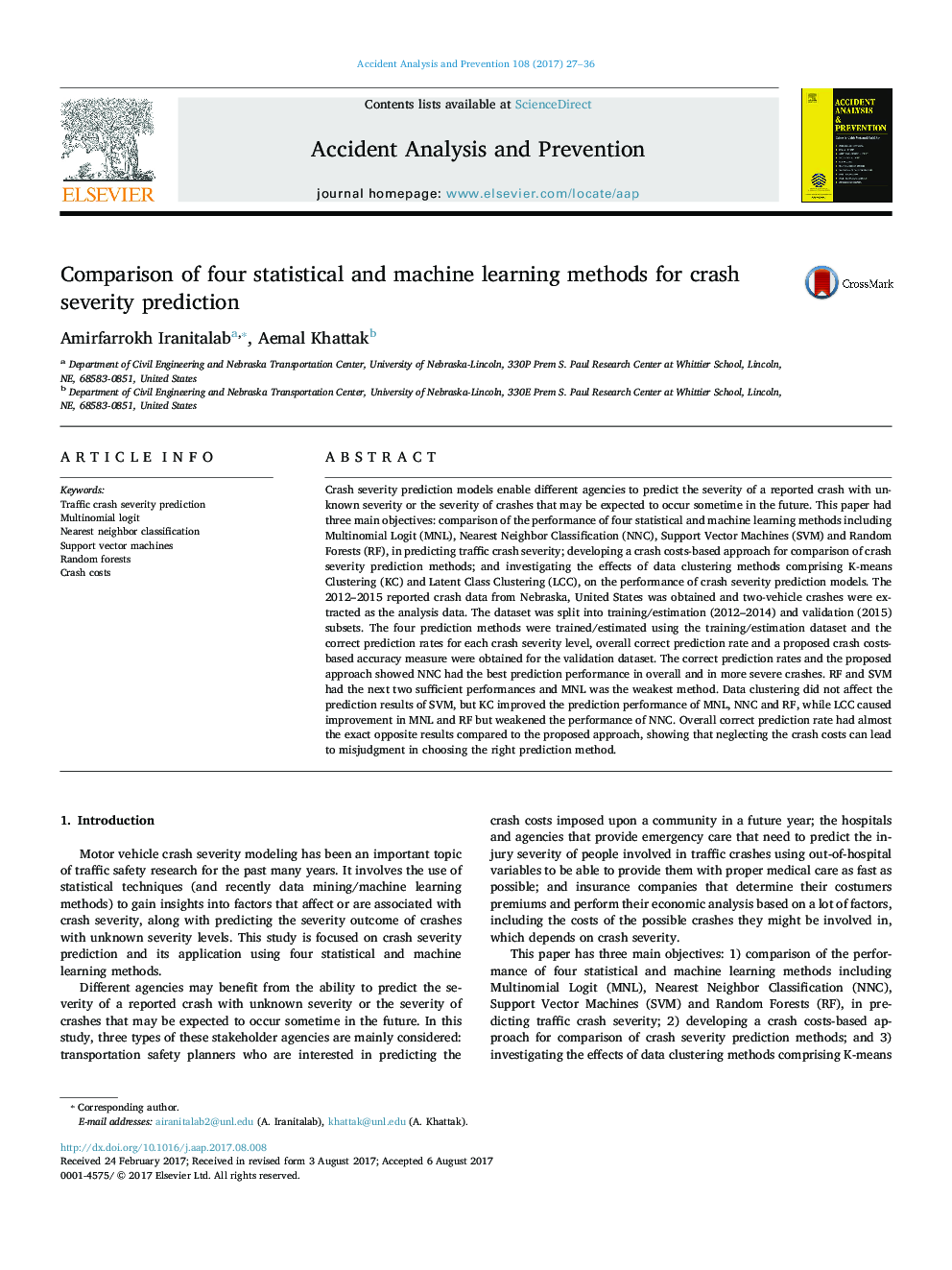| Article ID | Journal | Published Year | Pages | File Type |
|---|---|---|---|---|
| 4978503 | Accident Analysis & Prevention | 2017 | 10 Pages |
Abstract
Crash severity prediction models enable different agencies to predict the severity of a reported crash with unknown severity or the severity of crashes that may be expected to occur sometime in the future. This paper had three main objectives: comparison of the performance of four statistical and machine learning methods including Multinomial Logit (MNL), Nearest Neighbor Classification (NNC), Support Vector Machines (SVM) and Random Forests (RF), in predicting traffic crash severity; developing a crash costs-based approach for comparison of crash severity prediction methods; and investigating the effects of data clustering methods comprising K-means Clustering (KC) and Latent Class Clustering (LCC), on the performance of crash severity prediction models. The 2012-2015 reported crash data from Nebraska, United States was obtained and two-vehicle crashes were extracted as the analysis data. The dataset was split into training/estimation (2012-2014) and validation (2015) subsets. The four prediction methods were trained/estimated using the training/estimation dataset and the correct prediction rates for each crash severity level, overall correct prediction rate and a proposed crash costs-based accuracy measure were obtained for the validation dataset. The correct prediction rates and the proposed approach showed NNC had the best prediction performance in overall and in more severe crashes. RF and SVM had the next two sufficient performances and MNL was the weakest method. Data clustering did not affect the prediction results of SVM, but KC improved the prediction performance of MNL, NNC and RF, while LCC caused improvement in MNL and RF but weakened the performance of NNC. Overall correct prediction rate had almost the exact opposite results compared to the proposed approach, showing that neglecting the crash costs can lead to misjudgment in choosing the right prediction method.
Related Topics
Physical Sciences and Engineering
Chemical Engineering
Chemical Health and Safety
Authors
Amirfarrokh Iranitalab, Aemal Khattak,
